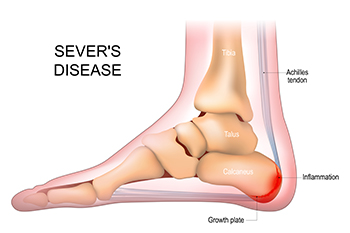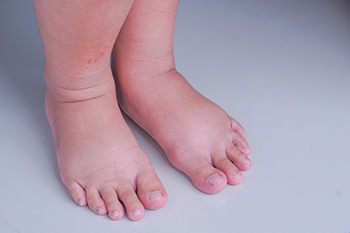
Research has shown that runners incur more injuries than other athletes. This can happen from a lack of stretching, in addition to the repetitive force that accompanies running. There are methods to prevent running injuries that can be applied to any type of running, ranging from running in several marathons to jogging on the weekend. It is beneficial to increase mileage and speed gradually, which can give the muscles and ligaments adequate time to adjust. Additionally, drinking enough water is important in preventing dehydration, especially after running is completed. It is helpful to consume sources of protein and carbohydrates, which can repair the muscles. It is important to stretch the legs properly before and after running, which is needed to prevent running injuries. If you would like to learn about foot-strengthening stretches that can help to prevent running injuries, it is suggested that you confer with a podiatrist who can provide you with useful information.
Exercising your feet regularly with the proper foot wear is a great way to prevent injuries. If you have any concerns about your feet, contact Dr. Lubrina Bryant of District Podiatry, PLLC. Our doctor will treat your foot and ankle needs.
How to Prevent Running Injuries
Many common running injuries are caused by overuse and overtraining. When the back of the kneecap starts wearing out and starts causing pain in your knee, this is commonly referred to as runner’s knee. Runner’s knee is a decrease in strength in your quadriceps and can occur if you’re not wearing properly fitted or supporting shoes. To prevent runner’s knee, focusing on hip strengthening is a good idea, as well as strengthening your quads to keep the kneecaps aligned.
What Are Some Causes of Running Injuries?
- One cause of a common running injury is called iliotibial band syndrome.
- Plantar fasciitis is also another common injury.
- Stress fractures can occur from overtraining, lack of calcium, or even your running style.
Best Ways to Prevent Running Injuries
- Wear footwear that fits properly and suits your running needs.
- Running shoes are the only protective gear that runners have to safeguard them from injury.
- Make a training schedule. Adding strengthening exercises as well as regular stretching can help keep you strong and limber and can lessen the possibility of injuries.
- Stretching keeps muscles limber; this will help you gain better flexibility.
If you have any questions please feel free to contact our office located in Washington, D.C . We offer the newest diagnostic and treatment technologies for all your foot and ankle needs.

Heel pain in children may be a sign of Sever’s disease, which is a foot condition that affects physically active young children and teenagers. While it can cause severe pain and discomfort and is considered to be the most common cause of heel pain in children, it generally does not cause long-term damage. Sever's disease is defined as an inflamed growth plate in the heel. This can happen from excessive force or overuse, resulting in heel pain. This plate is necessary for shaping the heel bone, in addition to producing tissue for proper growth. Some types of activities that can contribute to developing Sever’s disease include running, jumping, or standing for extended periods of time. It can affect basketball or soccer players, and gymnasts may also feel the effects of Sever’s disease. Common symptoms that are associated with Sever's disease can consist of a swollen and reddened heel, and it can be difficult to walk. Mild relief may happen when the offending activity is temporarily stopped and the foot is frequently elevated. If your child has heel pain, it is strongly suggested that you consult with a podiatrist who can effectively diagnose and treat Sever's disease.
Sever's disease often occurs in children and teens. If your child is experiencing foot or ankle pain, see Dr. Lubrina Bryant from District Podiatry, PLLC. Our doctor can treat your child’s foot and ankle needs.
Sever’s Disease
Sever’s disease is also known as calcaneal apophysitis, which is a medical condition that causes heel pain I none or both feet. The disease is known to affect children between the ages of 8 and 14.
Sever’s disease occurs when part of the child’s heel known as the growth plate (calcaneal epiphysis) is attached to the Achilles tendon. This area can suffer injury when the muscles and tendons of the growing foot do not keep pace with bone growth. Therefore, the constant pain which one experiences at the back of the heel will make the child unable to put any weight on the heel. The child is then forced to walk on their toes.
Symptoms
Acute pain – Pain associated with Sever’s disease is usually felt in the heel when the child engages in physical activity such as walking, jumping and or running.
Highly active – Children who are very active are among the most susceptible in experiencing Sever’s disease, because of the stress and tension placed on their feet.
If you have any questions, please feel free to contact our office located in Washington, D.C . We offer the newest diagnostic and treatment technologies for all your foot and ankle injuries.

The Achilles tendon is located in the back of the lower leg and connects the heel to the calf muscles. An injury can cause this tendon to become torn or inflamed, which often produces severe pain and discomfort. People who increase speed and distance too quickly while running may be prone to incurring an Achilles tendon injury, and this and similar activities will have to temporarily stop as the tendon heals. The Achilles tendon is responsible for pointing and flexing the foot and is instrumental while walking and running. Treatment generally begins with resting the affected foot, and it may help to take over the counter pain medications for mild relief. Many people will seek medical care for this type of injury, which can start by having a diagnosis performed. This can consist of having an X-ray done, which can determine if there is a bone injury. Once the Achilles tendon has healed, mild stretches can be performed, which may help to restore strength to the leg. If you have experienced this type of injury, it is strongly suggested that you confer with a podiatrist who can help you to manage this condition.
Achilles tendon injuries need immediate attention to avoid future complications. If you have any concerns, contact Dr. Lubrina Bryant of District Podiatry, PLLC. Our doctor can provide the care you need to keep you pain-free and on your feet.
What Is the Achilles Tendon?
The Achilles tendon is a tendon that connects the lower leg muscles and calf to the heel of the foot. It is the strongest tendon in the human body and is essential for making movement possible. Because this tendon is such an integral part of the body, any injuries to it can create immense difficulties and should immediately be presented to a doctor.
What Are the Symptoms of an Achilles Tendon Injury?
There are various types of injuries that can affect the Achilles tendon. The two most common injuries are Achilles tendinitis and ruptures of the tendon.
Achilles Tendinitis Symptoms
Rupture Symptoms
Treatment and Prevention
Achilles tendon injuries are diagnosed by a thorough physical evaluation, which can include an MRI. Treatment involves rest, physical therapy, and in some cases, surgery. However, various preventative measures can be taken to avoid these injuries, such as:
If you have any questions please feel free to contact our office located in Washington, D.C . We offer the newest diagnostic tools and technology to treat your foot and ankle needs.

For anyone who has suffered from swollen ankles, you know how uncomfortable this can be. Such swelling can make it hard to walk, and the skin on the ankle may feel tight and stretched. Swelling of the ankles can result from a variety of things including injury, like a broken leg or sprained ankle, inflammation, and fluid retention. Ankles are a common lower extremity to experience swelling because of the accumulation of fluids in the body and gravity. Those more likely to experience swelling in their ankles include seniors, those who are overweight, and those who spend a prolonged time on their feet or in hot weather. Pregnant women are another group of people who are prone to ankle swelling because of their natural fluid retention, pressure on veins from the extra weight they are carrying, and a fluctuation of hormones. Swollen ankles are typically temporary, and resting and elevating the feet can resolve the problem. However, if the swelling is from an underlying health condition, like diabetes, a blood clot, heart failure, or even a problem with high blood pressure during pregnancy, it can be a more serious situation requiring immediate medical care. If you are experiencing swelling in your ankles and it is causing you persistent or worsening pain, or if you have other symptoms, it is strongly suggested that you make an appointment with a podiatrist to understand what is underlying the swelling and obtain treatment.
Ankle pain can be caused by a number of problems and may be potentially serious. If you have ankle pain, consult with Dr. Lubrina Bryant from District Podiatry, PLLC. Our doctor will assess your condition and provide you with quality foot and ankle treatment.
Ankle pain is any condition that causes pain in the ankle. Due to the fact that the ankle consists of tendons, muscles, bones, and ligaments, ankle pain can come from a number of different conditions.
Causes
The most common causes of ankle pain include:
Symptoms
Symptoms of ankle injury vary based upon the condition. Pain may include general pain and discomfort, swelling, aching, redness, bruising, burning or stabbing sensations, and/or loss of sensation.
Diagnosis
Due to the wide variety of potential causes of ankle pain, podiatrists will utilize a number of different methods to properly diagnose ankle pain. This can include asking for personal and family medical histories and of any recent injuries. Further diagnosis may include sensation tests, a physical examination, and potentially x-rays or other imaging tests.
Treatment
Just as the range of causes varies widely, so do treatments. Some more common treatments are rest, ice packs, keeping pressure off the foot, orthotics and braces, medication for inflammation and pain, and surgery.
If you have any questions, please feel free to contact our office located in Washington, D.C . We offer the newest diagnostic and treatment technologies for all your foot care needs.